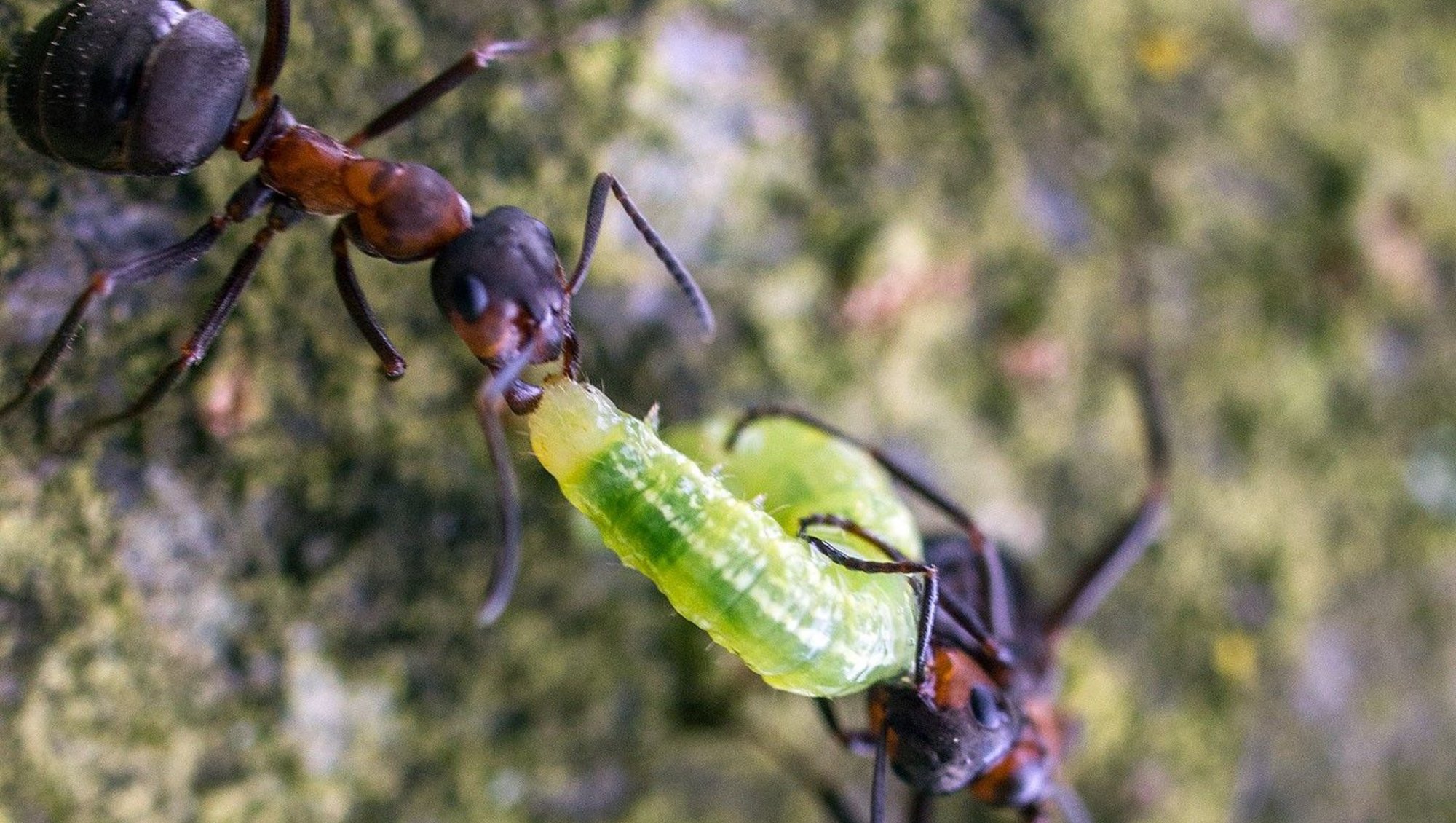AntFarm
Propagation of wood ants for the protection of fruit
Background
Organic fruit growers have limited means to combat plant diseases and pests, often resulting in lower yields compared to conventional fruit growers. However, in recent years, ants have shown promising effects against both plant diseases and pests - and since they are also easy to care for and relocate into fruit orchards, they can become an important tool for organic fruit growers.
We know that wood ants can combat pests in apple orchards. The ants hunt other insects that they use as food for their larvae. For example, they remove winter moths from apple trees in spring, preventing them from defoliating the trees. Moreover, ants have the additional positive effect of reducing the occurrence of apple scab and apple rot. This effect is likely due to ants secreting antibiotic substances, which they use in their fight against ant diseases. However, these substances have proven to be broad-spectrum, inhibiting plant diseases as well.
Since wood ants can be used against both insect pests and plant diseases, they can serve as biological plant protectors in Danish fruit orchards, thus becoming a welcome tool for organic growers. To implement the technology, wood ants need to be propagated. Therefore, the AntFarm project is testing whether wood ants can be cultivated - and if so, what the costs would be.
The Purpose of AntFarm
AntFarm aims to investigate the scalability and costs associated with cultivating Danish wood ants for commercial use. Researchers will examine how supplementary feeding affects the growth rate of the ants, whether ant nests can be relocated to and "cultivated" in new and uninhabited forest areas, and the expenses related to these initiatives. Through these efforts, the project will assess the economic feasibility of using ants for biological control. Additionally, researchers will conduct interviews with fruit growers to gain insight into their perceptions, concerns, and willingness to use ants in their orchards, thereby understanding the future perspectives of commercial ant utilization.
The expectation is that fruit growers can achieve higher and more stable yields as well as reduce pollution, given that ant utilization is both sustainable and environmentally friendly. Additionally, it can enhance biodiversity within the orchard.
While the ants' effectiveness as biological control agents have been tested primarily in apple orchards, they are also expected to be usable in other types of fruit cultivation. Laboratory experiments have shown that antibiotic substances from the ants inhibit plant diseases other than just apple scab and apple rot, such as gray mold.
| AntFarm step by step |
|---|
|
Project leader
Joachim Offenberg
Senior scientist
Department of Ecoscience – Terrestrial ecology, Aarhus University.
joaf@ecos.au.dk



